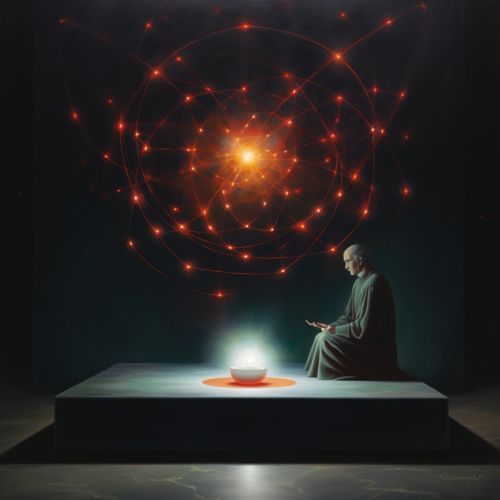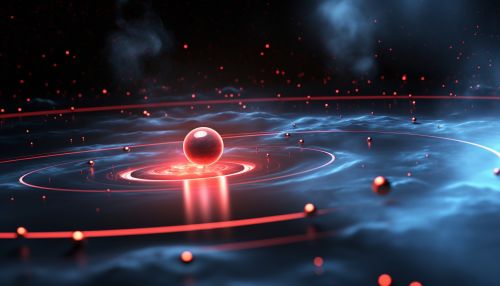Photon
Introduction
A photon is a type of elementary particle, the quantum of the electromagnetic field including electromagnetic radiation such as light, and the force carrier for the electromagnetic force. Photons are massless, they always move at the speed of light in vacuum, and they are spin-1 particles, which makes them bosons.
Physical Properties
Photons are unique for several reasons. They are the only particles that are known to be completely massless. This lack of mass allows them to travel at the speed of light, approximately 299,792 kilometers per second in a vacuum. Photons also have no electric charge, so they do not interact directly with electric or magnetic fields. However, they can affect the behavior of charged particles through the electromagnetic force.


Photons possess a property known as spin. This is a form of intrinsic angular momentum that is separate from the angular momentum caused by their motion. The spin of a photon is always in the direction of its motion, a property known as helicity. This property is responsible for the polarization of light.
Wave-Particle Duality
One of the most intriguing aspects of photons is their wave-particle duality. This means that they exhibit properties of both particles and waves. For example, they can be counted and have energy levels like particles, but they can also interfere and diffract like waves. This duality is a fundamental aspect of quantum mechanics, and it is not limited to photons. Other particles such as electrons and protons also exhibit wave-particle duality to some extent.


Energy and Momentum
The energy of a photon is directly proportional to its frequency, a relationship known as Planck's equation. This relationship is expressed as E = hf, where E is the energy of the photon, h is Planck's constant, and f is the frequency of the photon. This equation shows that as the frequency of a photon increases, so does its energy.
Photons also carry momentum, despite their lack of mass. The momentum of a photon is given by the equation p = E/c, where p is the momentum, E is the energy of the photon, and c is the speed of light. This equation shows that even though a photon has no mass, it can still carry momentum due to its energy.
Interaction with Matter
Photons interact with matter in several ways. They can be absorbed by atoms, exciting the atom's electrons to higher energy levels. They can also be emitted by atoms as the electrons drop to lower energy levels. This process of absorption and emission is responsible for the colors we see.


Photons can also be scattered by matter. This scattering can be elastic, where the photon retains its energy, or inelastic, where the photon loses some of its energy to the particle it scatters off. This scattering is responsible for phenomena such as the blue color of the sky.
Applications
Photons have many applications in various fields. In physics, they are used in experiments to probe the properties of other particles. In medicine, they are used in treatments such as radiation therapy and in imaging techniques such as X-rays. In telecommunications, they are used to transmit information over long distances through fiber optic cables.


See Also
- Quantum mechanics
- Electromagnetic radiation
- Electromagnetic force
- Wave-particle duality
- Planck's constant
References
1. "Photon." Encyclopædia Britannica. Encyclopædia Britannica, inc., n.d. Web. 20 May. 2021. <https://www.britannica.com/science/photon>. 2. "The Nature of Light." Physics for Scientists and Engineers: A Strategic Approach with Modern Physics (4th Edition). Pearson Education, Inc., 2017. 3. "Photon." Wikipedia. Wikimedia Foundation, n.d. Web. 20 May. 2021. <https://en.wikipedia.org/wiki/Photon>. 4. "Photon." HyperPhysics. Georgia State University, n.d. Web. 20 May. 2021. <http://hyperphysics.phy-astr.gsu.edu/hbase/Particles/photon.html>.
